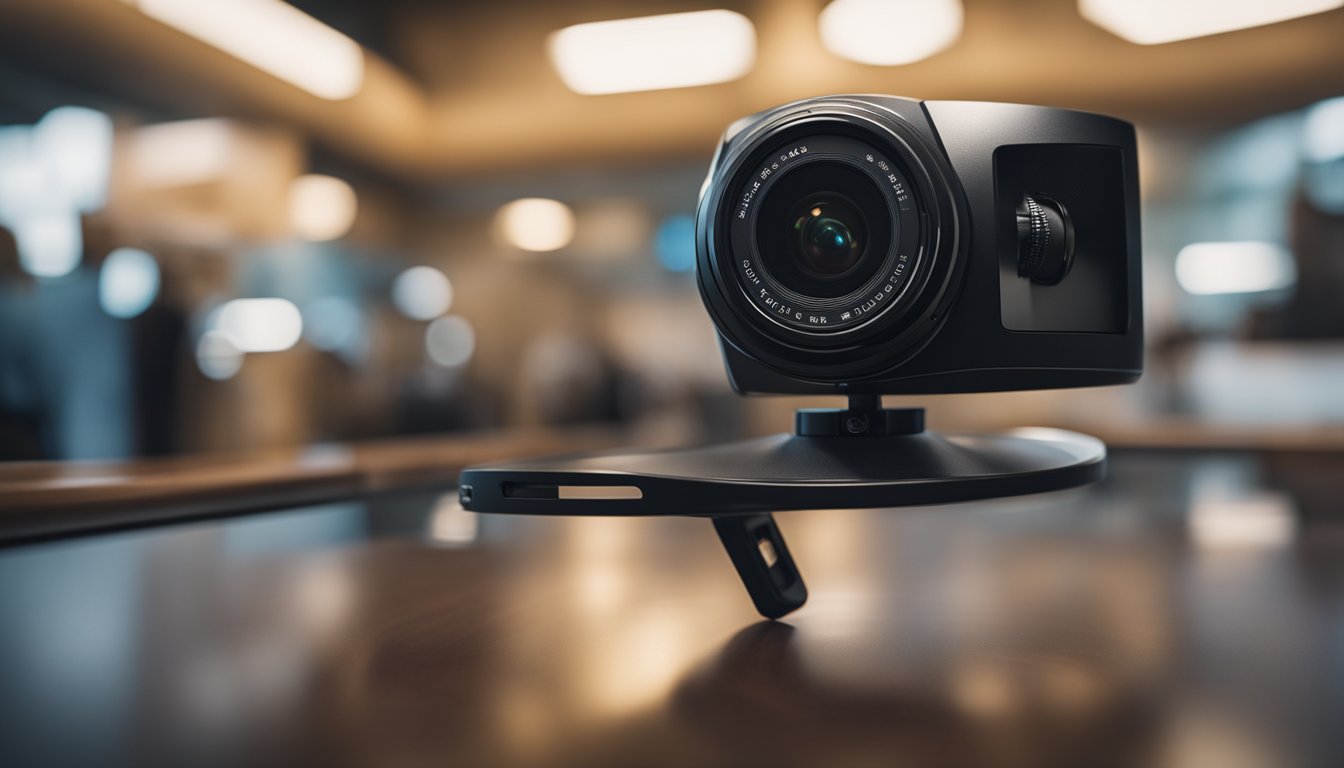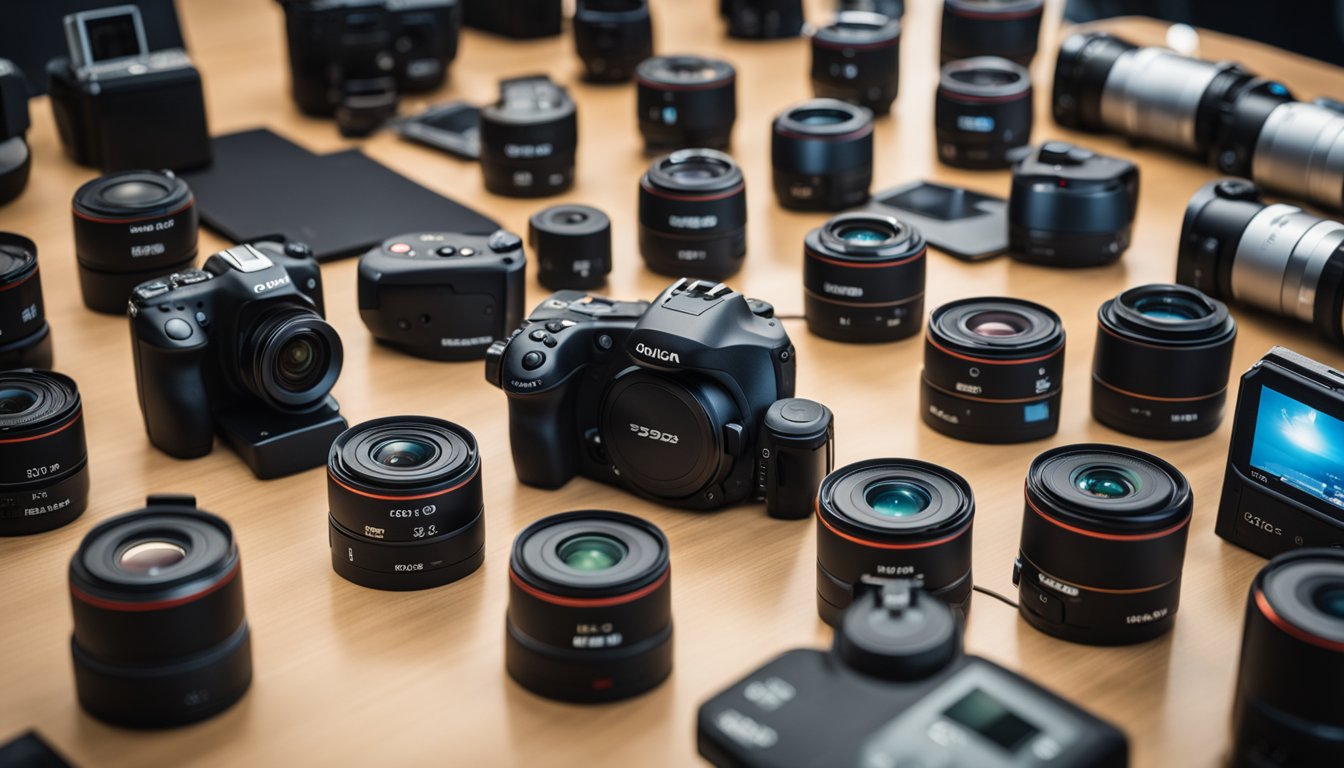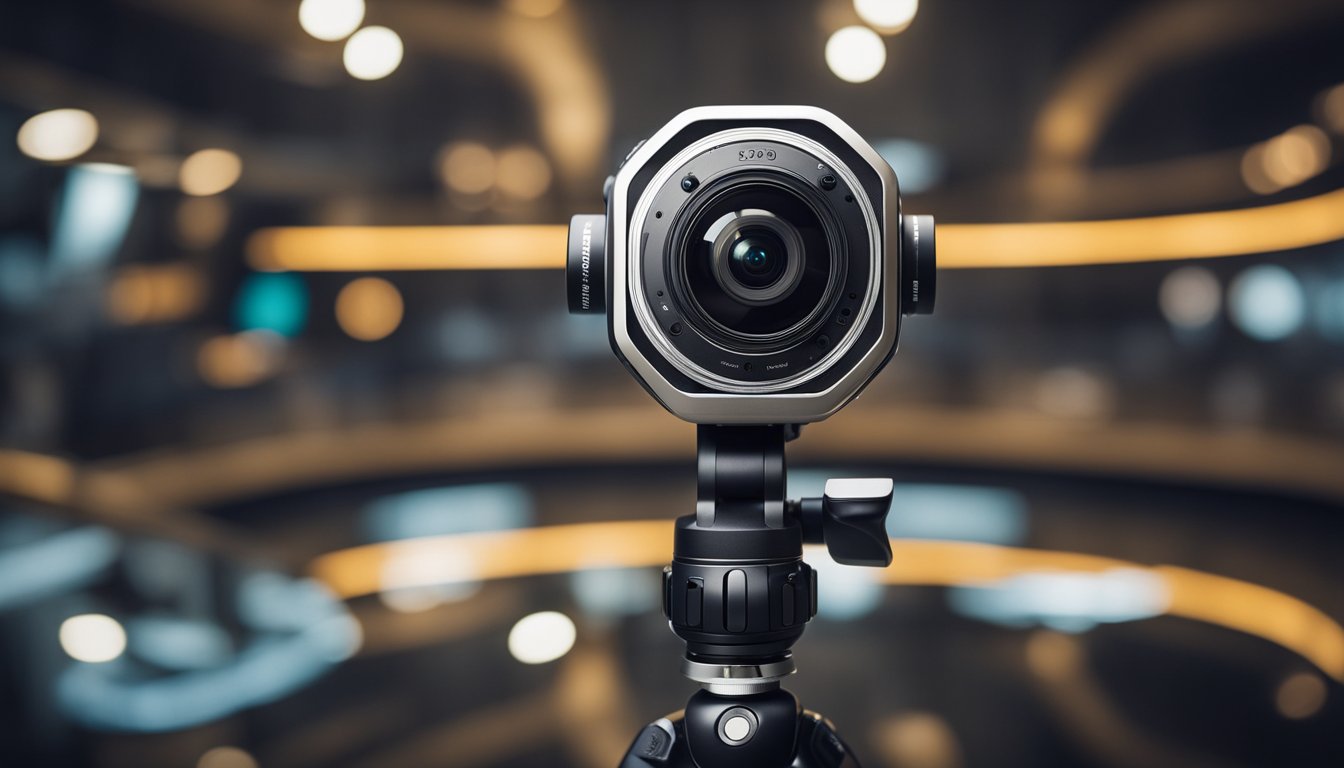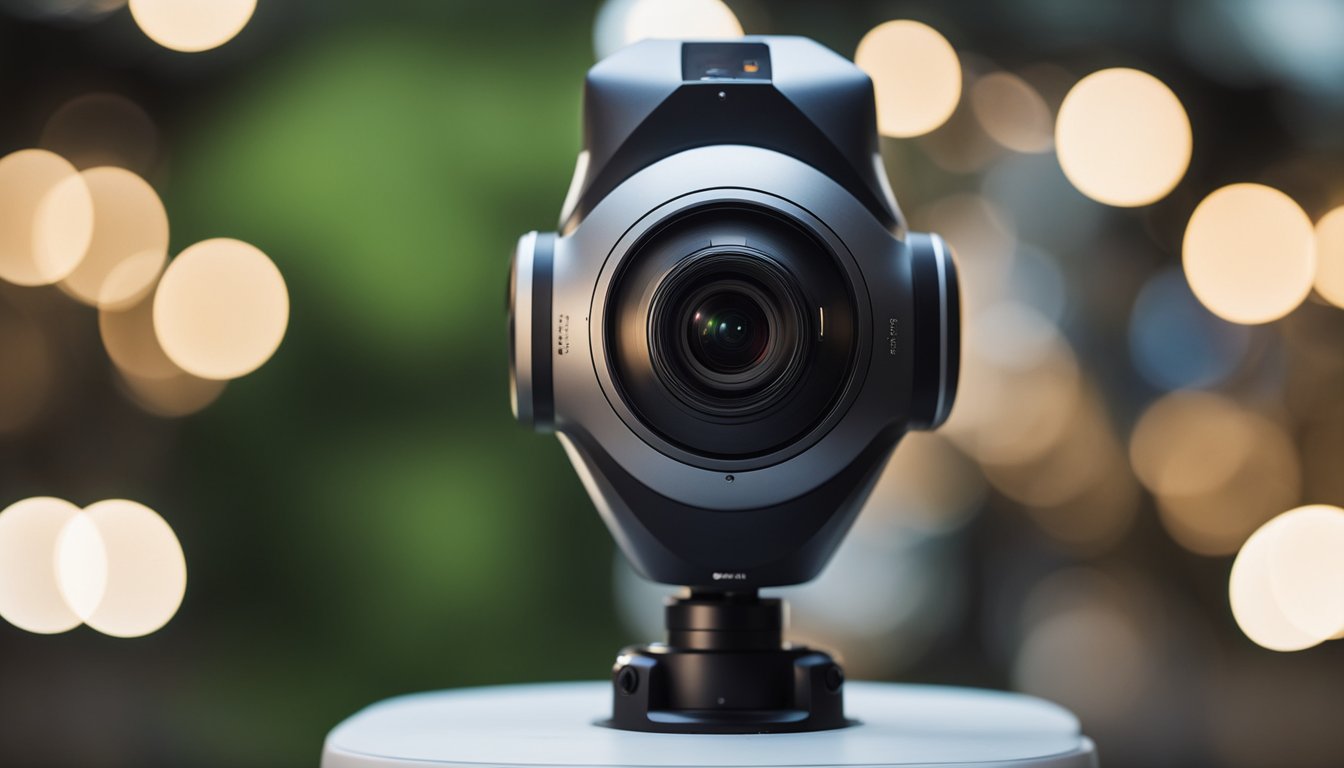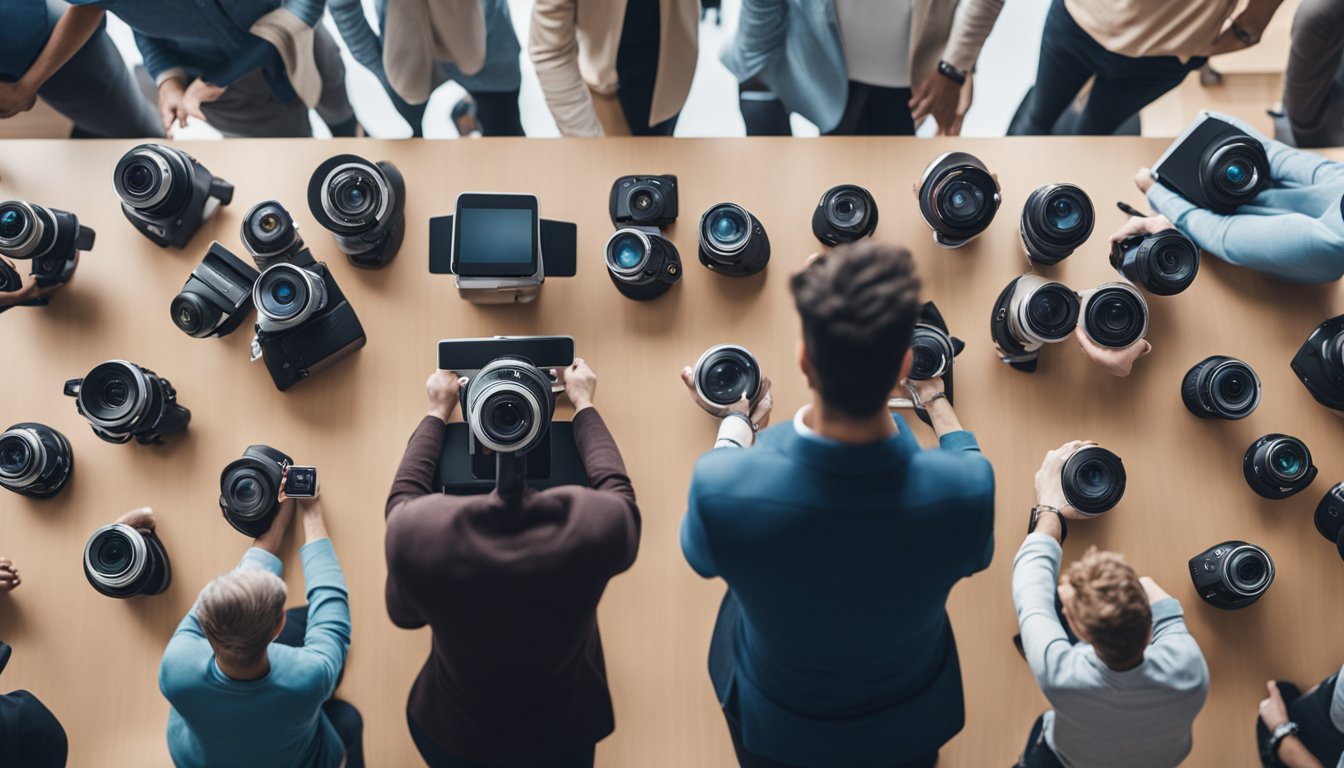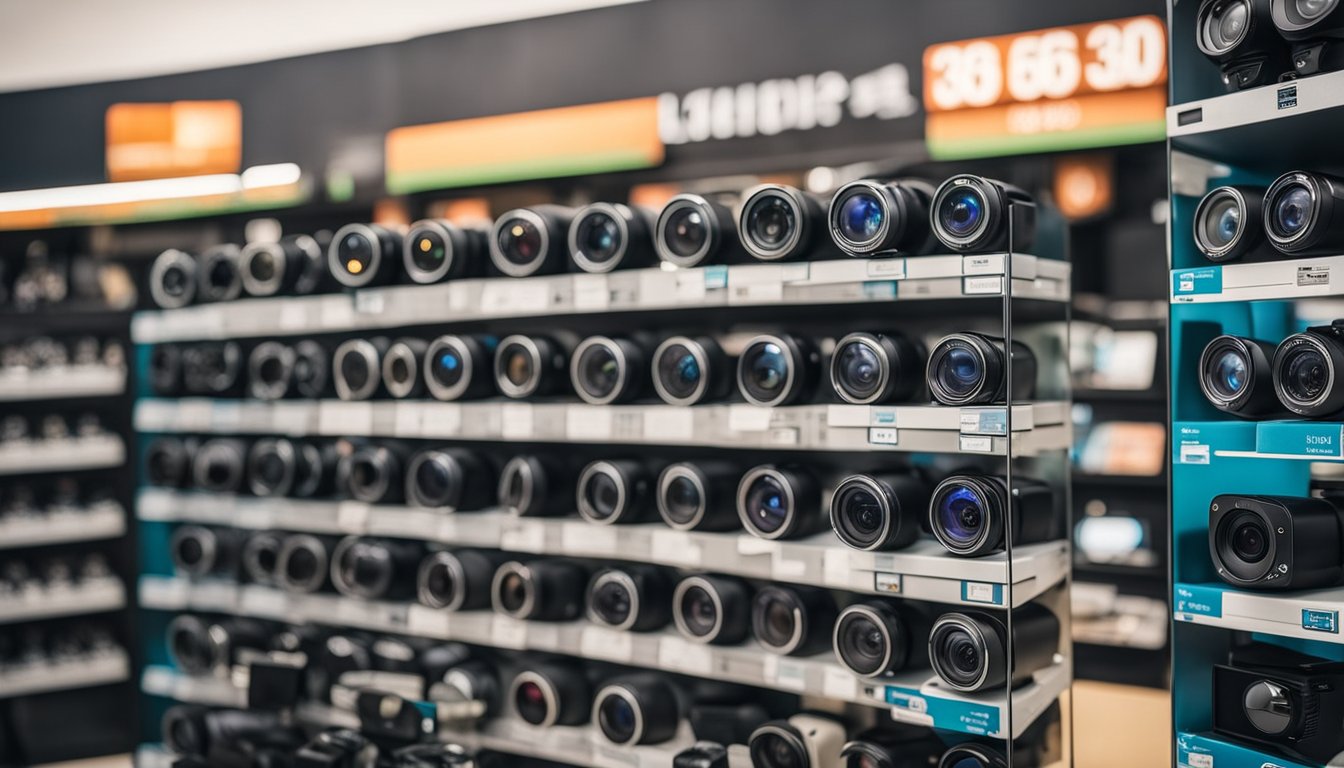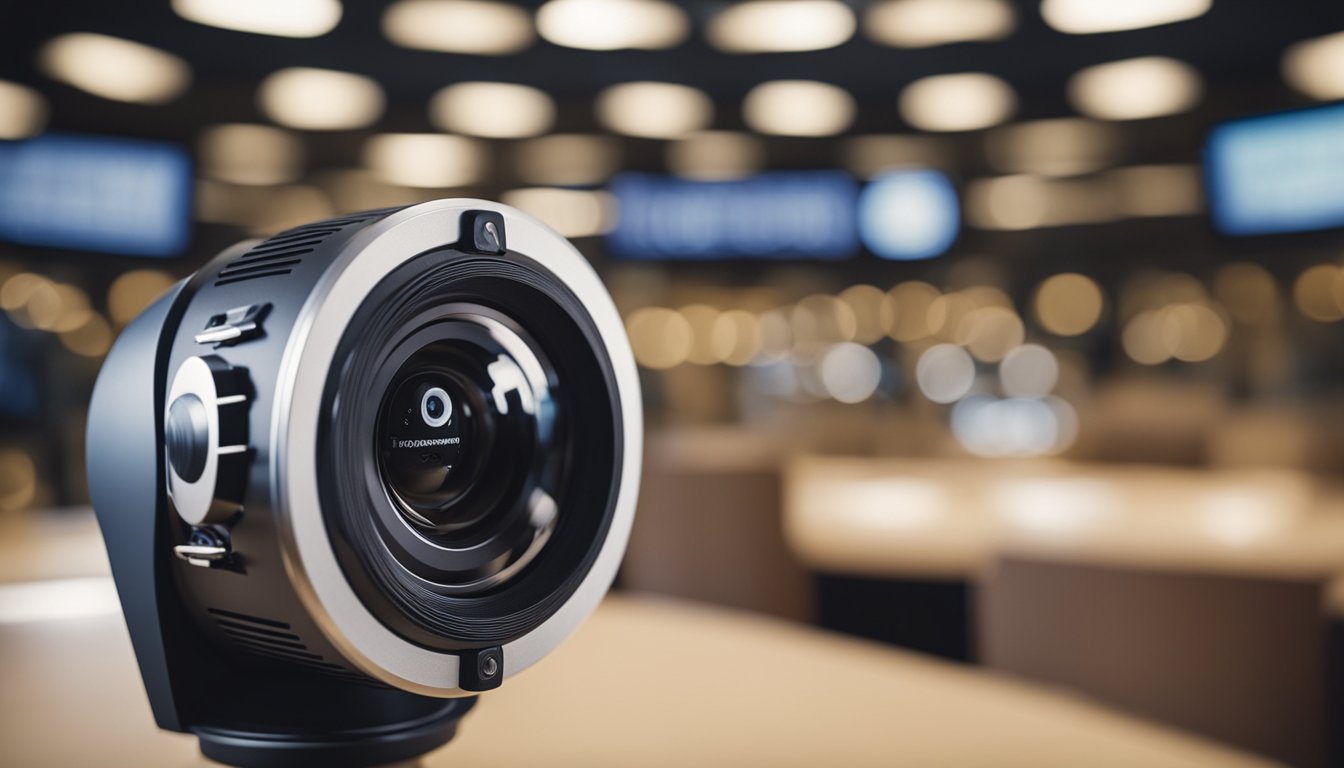360-degree cameras have revolutionized the way we capture and share our world. These devices offer a unique spherical video and photo capture capability, letting you record everything around you with just one press of a button. The affordance of capturing a full 360-degree view can add an immersive element to your memories that traditional cameras simply cannot match. Whether it’s for professional use, creating virtual tours, or simply capturing life’s moments in a new way, 360 cameras open up a new realm of possibilities.
When considering a purchase, the cost of 360 cameras can vary widely based on features, brand, and quality. Entry-level models can be quite affordable, making them accessible to casual users or those just starting out. On the other end of the spectrum, professional-grade cameras offer higher resolution, better image quality, and advanced features, which naturally come at a higher price point. The market is populated with options for every level of interest and expertise—a fact that necessitates a careful evaluation of what you need from a 360 camera before making an investment.
Key Takeaways
- 360-degree cameras allow for immersive photo and video capture with simple operation.
- Prices vary from budget-friendly to professional models, reflecting the camera’s features and quality.
- Selection should be based on personal needs, considering aspects like image quality, video capabilities, and connectivity.
Understanding 360 Cameras
https://www.youtube.com/watch?v=WtAiEeZiYfs&embed=true
With a 360 camera, you can capture the world in a way traditional cameras can’t. Imagine snapping a photo and getting every angle in one shot – that’s what a 360-degree camera does. It lets you capture immersive videos and images that put you right in the middle of the scene.
How They Work:
- Dual Lenses: Most 360 cameras use two back-to-back lenses to cover full spherical scenes.
- Image Stitching: These cameras automatically stitch the images from each lens together to create a seamless 360-degree view.
What You Can Capture:
- Stills: Just like a standard camera, you can take single-frame shots.
- Videos: Record dynamic scenes, perfect for virtual reality.
- 360 Audio: Some models even capture sound from all directions to complement your visuals.
Why Use One?
- Immersive Experience: Sharing a 360 photo or video allows others to explore the scene as if they were there.
- Creativity: It opens up new opportunities for storytelling and content creation.
Remember, the results you get from a 360 camera depend on factors like lens quality and resolution. Entry-level cameras are a great way to start exploring this tech without making a big investment. For more detail on what to expect when purchasing a 360 camera, including cost considerations, check out How Much Does A 360 Camera Cost?.
Popular 360 Camera Models
When you’re looking to capture everything around you in stunning detail, 360 cameras are your go-to gadgets. From action cams to professional-grade devices, the market offers a lineup suited for every type of content creator.
GoPro Models
GoPro is renowned for its durable and high-quality action cams, and their 360 offerings are no exception. The GoPro Max has gained popularity for its stabilized 360 shooting and high-resolution videos. Equipped to handle rough and tumble adventures, it’s a top pick for those who love action-packed captures.
- GoPro Max: Offers 5.6K30 video capture and in-camera stitching for seamless content creation.
Insta360 Lineup
« How Do 360 Car Cameras Work: Unveiling the Technology Behind the Scenes
What is a 360 Camera: Capturing Every Angle with Ease »
For versatility and innovation, the Insta360 brand is often at the forefront. With options like the versatile Insta360 ONE R, which transforms with interchangeable lenses, and the Insta360 ONE RS Twin Edition, your creative possibilities are vast.
- Insta360 X3: This model is particularly loved for its 5.7K30 video capabilities with Active HDR.
- Insta360 One R: Noted for its modular design, allowing a mix-and-match of lenses for various shooting scenarios.
- Insta360 One X2: It stands out for its stabilization features and ease of use.
- Insta360 One RS: Its 1-Inch 360 Edition boasts impressive image quality, making it a favorite for professionals.
Other Notable Brands
In the wider sphere of 360 cameras, Kandao and Ricoh make their mark with exceptional offerings. The Kandao QooCam 8K delivers stunning 8K resolution for those crisp, ultra-detailed images, while the Ricoh Theta SC2 is an entry-level option that provides good quality at a more affordable price.
- Kandao QooCam 8K: Known for its 8K video capability and high-resolution content.
- Kandao QooCam: Perfect for capturing day-to-day moments with good clarity and stabilization.
- Ricoh Theta Z1: A professional choice with excellent low light performance.
- Ricoh Theta SC2: Great for budget-conscious users who still want quality 360-degree images.
Key Features to Consider
When you’re in the market for a 360-degree camera, your satisfaction hinges on a few critical features. Let’s dig into the aspects that make or break the 360 camera experience for you.
Image Quality and Resolution
The heart of a 360 camera lies in its image quality and resolution. Look for cameras that offer at least 4K resolution to ensure crisp and immersive footage. High-end models with 8K resolution provide even more detail, allowing for clear images even when zoomed in. Larger CMOS sensors and the ability to shoot in RAW can significantly boost image quality, especially those with a 1-inch sensor or larger, which are great for capturing details with a high dynamic range and superior low light performance.
Battery Life and Durability
Your camera’s battery life is crucial—you wouldn’t want it dying in the middle of a shoot. Check battery ratings and consider cameras that offer replaceable batteries for extended use. Durability matters too; if you love outdoor activities, a camera with solid build quality and water resistance is a boon. For rugged environments, GoPro’s MAX camera garners praise for its robustness.
Software and Editing Process
After the shoot, your focus shifts to the editing process. The accompanying software or editing program should be user-friendly and packed with software features to finesse your footage. Look for options that allow for easy stabilization and streamlining complex tasks. Cameras often come with proprietary software, and some offer integrations with popular editing platforms for added convenience.
Camera Design
Lastly, consider the design elements. A modular design may appeal if you love versatility, as it allows for component upgrades. OLED touchscreens make navigation a breeze, and everyone appreciates a lightweight camera that’s easy to carry. Fisheye lenses with strong stabilization help capture steady and captivating panoramic shots. Wi-Fi connectivity is also a beneficial feature, permitting swift transfers to other devices.
When picking out your 360 camera, ensure these features align with your needs to enjoy the best filming experience.
Specialized Uses of 360 Cameras
360-degree cameras have opened up new possibilities across various industries, allowing you to capture immersive content like never before. From giving virtual tours to capturing heart-pounding action sports, these cameras offer unique features that go beyond traditional photography and videography.
Virtual Tours and Real Estate
You can create interactive virtual tours with a 360 camera, offering a digital walk-through experience for your audience. This is especially powerful in real estate, where potential buyers or renters can explore properties remotely, getting a feel for the space without being physically present. High-quality photos and videos allow for a seamless virtual reality presentation, making it a critical tool for your real estate business.
Action Sports and Adventures
For the thrill-seekers and adventurers, 360 cameras serve as the ultimate action cam. You can capture dynamic videos and photos that include every angle of your daring exploits. Say goodbye to concerns about framing your shot mid-action; your camera records in every direction, ensuring you never miss a moment, whether you’re skydiving, surfing, or mountain biking.
Live-streaming and Content Creation
If you’re a content creator or enjoy live-streaming, a 360 camera can elevate your presence on platforms like YouTube. Live activations become more interactive, giving your viewers a panoramic view and making them feel like they’re right there with you. For content creation, these cameras provide novel angles and perspectives that can set your work apart in a sea of traditional videos.
Best Cameras for Image Quality
https://www.youtube.com/watch?v=HIjXjAkQ6qg&embed=true
When you’re looking for a 360-degree camera, you want one that brings out the finest details in your images. High-resolution capabilities and performance in low-light conditions are crucial for capturing moments with exceptional clarity.
High-Resolution Cameras
For high-resolution captures, the Insta360 X3 is a game-changer, boasting video quality up to 5.7K. That’s ideal for when you’re after sharp, detailed footage that stands out. On the other hand, the GoPro Max ensures your adventures are captured in brilliant detail, offering similar 5.7K resolution for your most dynamic shots.
Key Features for High-Resolution 360° Cameras:
-
Insta360 X3:
- Video Resolution: 5.7K 30fps
- Still Images: 18MP
-
GoPro Max:
- Video Resolution: 5.7K 30fps
- Still Images: 16.6MP
Best Low-Light Performance
Low-light photography can be tricky, but with the right camera, you’ll still get crisp images. The Ricoh Theta Z1, which isn’t directly listed in the search results but known for its performance, excels in low-light with its 1-inch sensors, providing a blend of sensitivity and clarity. For capturing still images in less-than-ideal lighting, the Insta360 X3 stands out with its Active HDR feature enhancing your shots without sacrificing detail. The GoPro Max also performs commendably in low light, ensuring the night’s essence is preserved in your memories.
Cameras with Notable Low-Light Performance:
-
Insta360 X3:
- Feature: Active HDR for better low-light images
-
GoPro Max:
- Feature: Max HyperSmooth for stable low-light videos
By choosing a camera with both high-resolution output and robust low-light performance, your 360-degree photography and videography will truly stand out. Keep these specific features and models in mind as you search for the camera that suits your needs for capturing life in full detail.
Evaluating Video Capabilities
https://www.youtube.com/watch?v=xqWkJJOcU4g&embed=true
When you’re assessing 360-degree cameras, the video quality—especially the fluidity of motion, stability, and audio clarity—is critical. Yours will be an immersive viewing experience if these factors are optimized.
Frame Rate Options
Your camera’s ability to capture super-smooth video heavily relies on its frame rate. Higher frame rates like 60 fps are ideal for creating lifelike motion, whereas 30 fps is a standard that balances quality with file size. Cameras boasting 5.7k video resolution often provide these varying frame rates, giving you the flexibility to choose based on your project’s needs.
Advances in Stabilization Technology
Stabilisation is key for 360-degree cameras. If you want your videos to be free of jarring movements, look for features such as FlowState stabilization or advanced image stabilization. These technologies help to ensure that even while you’re moving, your video stays smooth as if it were shot on a professional rig.
Improving Sound Quality
Sound quality can’t be overlooked. The best 360 cameras now offer features like 360 audio and dual microphones to capture a rich, directional sound field that aligns with the visuals. Whether it’s for capturing the ambiance of a scene or the clarity of spoken words, high-quality sound recording capabilities will greatly enhance your 2D video and fully immersive content.
Camera Connectivity and Accessories
When you’re venturing into the world of 360-degree cameras, the connectivity options and available accessories can greatly enhance your experience. Not only do they allow for a smoother workflow, from capturing footage to editing, but they also expand the functionality of your camera for various uses.
Wi-Fi and Mobile App Integration
Most modern 360 cameras offer Wi-Fi connectivity, enabling you to pair your camera with a mobile app on your smartphone or tablet. This integration usually allows for remote control of the camera, which is particularly useful if you want to start recording without physically touching the device. Moreover, some mobile apps provide basic editing programs, so you can refine your footage on the go before sharing it directly to social media or storing it.
Modularity and Compatible Accessories
A camera’s value can increase with its modular design, which allows you to add or remove components. For instance, being able to attach different lenses or battery modules can adapt your camera for a variety of scenarios. Here’s a quick look at what you might consider:
- Battery Packs: Extend your shooting time with additional power options.
- Protective Cases: Keep your camera safe from the elements.
- Mounting Options: Secure your camera to different surfaces for dynamic shooting angles.
Compatible accessories ensure that you make the most out of your 360 camera, not only expanding its capabilities but also ensuring that it can evolve with your growing needs in the field of photography and videography.
Pricing and Budget Considerations
When shopping for a 360-degree camera, your budget is one of the primary factors that will guide your decision. Cameras range in price from affordable entry-level options to high-end models with advanced features. Here’s a simple breakdown to consider:
-
Entry-Level ($200 – $400): At this price point, you can find basic 360 cameras that are suitable for casual use. Features might be limited, but they’re a good starting point.
-
Mid-Range ($400 – $800): Cameras in this bracket offer improved resolution and additional features, such as better image stabilization and connectivity options.
-
Professional ($800 and above): These are top-tier 360 cameras with the best overall performance. They come with the highest quality lenses and the ability to shoot in 8K resolution.
| Budget Category | Price Range | Pros |
|---|---|---|
| Entry-Level | $200 – $400 | Cost-effective, Basic features |
| Mid-Range | $400 – $800 | Enhanced quality, More features |
| Professional | $800 and above | Highest quality, Cutting-edge tech |
To make a well-informed purchase, read reviews from credible sources. They can provide recommendations based on your specific needs. For instance, the Insta360 X3 is noted for its exceptional video quality and robust feature set, fitting nicely into the mid-range category. Alternatively, for those seeking an affordable option for virtual tours, there might be cameras for every budget mentioned on 360 Rumors.
Remember, the best camera for you aligns with both your financial limits and your desired use cases. So, set your budget, read up on various models, and choose the one that fits both your wallet and your creative goals.
User Reviews and Recommendations
When it comes to selecting the best 360 cameras, user reviews are invaluable. They provide real-world insights that can guide your decision. Here are some key takeaways:
- Insta360 X3: Known for its 5.7K video quality, users appreciate its Active HDR feature, particularly for mixed lighting conditions. Creative features are also highly praised, making it a favorite among enthusiasts.
- GoPro Max: For those of you who love vlogging, this camera is often highlighted for its user-friendly interface and robust design. It’s great for adventure seekers aiming to capture dynamic footage.
- Ricoh Theta X: Users note the Theta X for its convenience, making it a strong contender for those needing a quick and easy setup without compromising on image quality.
| Camera Model | Top Features | User Recommended For |
|---|---|---|
| Insta360 X3 | 5.7K Video, Active HDR, Creative Tools | Mixed Lighting, Video Enthusiasts |
| GoPro Max | User Interface, Durability | Vlogging, Adventure Filming |
| Ricoh Theta X | Convenience, Image Quality | Quick Setup, Quality Content |
Remember to consider what’s important to you—be it durability, image quality, or special features. Often, the best 360 camera for you will align with your specific needs and the experiences of those with similar interests. Check out detailed feedback on forums and retail sites to get a comprehensive view before making your purchase.
Tips for Beginners
https://www.youtube.com/watch?v=U1LfMYN6Luc&embed=true
Embarking on 360-degree photography may seem daunting at first, but with the right equipment and software, you’re sure to make your mark in the world of virtual tours and immersive content. Your journey starts here with some essential guidance.
Getting Started with 360 Photography
To dive into 360-degree photography, selecting a camera that meets your needs and skill level is crucial. Brands like Insta360 and GoPro offer cameras that cater to a variety of experiences, from beginner to professional. When capturing stills or photos for virtual tours, consider the framing of your environment; a well-framed photo can transport your viewer right into the scene. Remember, with 360 photography, every angle counts, so survey your surroundings thoroughly.
Choosing The Right Editing Software
After capturing your 360 photos or footage, the next step is choosing an editing program. There are many software options available, but aim for one that aligns with your skill level and desired outputs. For instance, Insta360 provides its own editing suite, which can be a perfect match for beginners. If you’re looking to create more complex projects or add sophisticated effects, seek out advanced programs that offer a wide array of editing tools. Here’s a quick overview of what to consider:
| Software | User-Friendliness | Features |
|---|---|---|
| Insta360 | Ideal for beginners | Straightforward editing, good for basic virtual tours |
| GoPro | Moderate | Offers more advanced options for those with some experience |
Finding the right balance between ease of use and the capability to create stunning virtual tours and interactive experiences is key. Ensure the software you choose can handle the stitching of images seamlessly and provides a user-friendly interface for editing your content.
Where to Buy 360 Cameras
When you’re on the hunt for a 360 camera, Best Buy is one of your go-to retail spots. They offer a variety of models, including the popular GoPro MAX 360 and the Insta360 X3, which are suitable for both action-packed adventures and professional-grade photography.
For a more comprehensive guide and comparison shopping, take a look at Digital Camera World, where you can find a list of the best 360 cameras in 2023, complete with up-to-date pricing and feature breakdowns.
Here’s a quick reference table of potential shopping destinations:
| Retailer | Highlighted Products | Note |
|---|---|---|
| Best Buy | GoPro MAX 360, Insta360 X3 | Offers open-box deals |
| Digital Camera World | Various top-rated 360 cameras | Price checking and reviews |
Remember, if you prefer browsing in person, you can visit local electronics stores where you can get hands-on experience with the cameras before purchasing. Don’t forget to check for special deals, especially around holiday sales, which might save you quite a bit of money on your purchase.
Frequently Asked Questions
When exploring the world of 360-degree cameras, you might have several questions about cost, quality, and uses. Below, find some of the most frequently asked questions to guide your purchasing decisions.
What is the price range for top-rated 360-degree cameras?
The prices for high-quality 360-degree cameras can vary widely, typically ranging from about $300 to well over $1,000, depending on the features and brand.
Can I use a 360-degree camera for professional photography?
Yes, you can use a 360-degree camera for professional photography, especially models designed for high resolution and multiple shooting modes, which offer the quality demanded by professionals.
What are the best 360 cameras for creating virtual tours?
Cameras like the Theta Z1 and Kandao QooCam 8K are highly recommended for creating detailed virtual tours due to their image quality and features.
Which 360-degree cameras are recommended for use in real estate?
Real estate professionals may benefit from using the Theta Z1 360 for its exceptional image detail and the Kandao QooCam 360 Camera for its 8K video resolution and stabilization.
Is there a 360 camera that is suitable for action and adventure sports?
For action and adventure sports, durable and waterproof 360 cameras like those listed in PCMag’s roundup are suitable for capturing dynamic moments in challenging conditions.
How much does it cost to equip a car with a 360-degree camera system?
The investment to outfit a car with a 360-degree camera system can vary, usually starting at a few hundred dollars and increasing with higher-end systems and additional features for enhanced visibility and safety.


